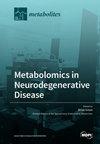复方木鸡颗粒通过减轻氧化应激和炎症、抑制细胞凋亡以及调节整体代谢来改善肝纤维化
IF 3.4
3区 生物学
Q2 BIOCHEMISTRY & MOLECULAR BIOLOGY
引用次数: 0
摘要
复方木鸡颗粒(FMGs)是一种著名的现代处方中成药制剂,源自木鸡煎剂。在近四十年的临床实践中,复方木鳖子颗粒已证明对治疗肝病有显著疗效。然而,其确切的作用机制仍不清楚。本研究基于非靶向代谢组学研究了 FMGs 对大鼠肝纤维化的保肝作用,并阐明了其潜在机制。大鼠腹腔注射 30% CCl4(2 mL/kg),并以脂肪和糖类为主食,同时伴有高温和高湿,建立了一个全面的肝纤维化模型。给大鼠口服 FMG(3.12 克/千克/天),每天一次,连续六周。给药后,肝纤维化得到改善,肝脏氧化应激和细胞凋亡也有所减轻。此外,FMGs 还能抑制肝星状细胞活化,调节转化生长因子 β1/Smad 信号转导。此外,FMG 还能影响损伤肝脏中白细胞介素-6、白细胞介素-1β 和肿瘤坏死因子α 的表达水平。涉及牛磺酸和低牛磺酸代谢以及初级胆汁酸生物合成的代谢途径被确定为 FMG 的作用机制。免疫组化、定量反转录聚合酶链反应(RT-qPCR)和定量分析也显示,FMGs 可调节牛磺酸和低牛磺酸代谢以及胆汁酸代谢。这些发现为了解 FMGs 在肝纤维化管理中的作用提供了宝贵的信息。本文章由计算机程序翻译,如有差异,请以英文原文为准。
Fufang Muji Granules Ameliorate Liver Fibrosis by Reducing Oxidative Stress and Inflammation, Inhibiting Apoptosis, and Modulating Overall Metabolism
Fufang Muji granules (FMGs) are a prominent modern prescription Chinese patent formulation derived from the Muji decoction. Utilized in clinical practice for nearly four decades, FMGs have demonstrated efficacy in treating liver diseases. However, the precise mechanism of action remains unclear. This study investigates the hepatoprotective effects of FMGs against liver fibrosis in rats based on untargeted metabolomics and elucidates their underlying mechanisms. A comprehensive model of liver fibrosis was established with 30% CCl4 (2 mL/kg) injected intraperitoneally, and a fat and sugar diet combined with high temperatures and humidity. Rats were orally administered FMGs (3.12 g/kg/d) once daily for six weeks. FMG administration resulted in improved liver fibrosis and attenuated hepatic oxidative stress and apoptosis. Furthermore, FMGs inhibited hepatic stellate cell activation and modulated transforming growth factor β1/Smad signaling. Additionally, FMG treatment influenced the expression levels of interleukin-6, interleukin-1β, and tumour necrosis factor alpha in the injured liver. Metabolic pathways involving taurine and hypotaurine metabolism, as well as primary bile acid biosynthesis, were identified as mechanisms of action for FMGs. Immunohistochemistry, quantitative reverse transcription polymerase chain reaction (RT-qPCR), and quantitative analysis also revealed that FMGs regulated taurine and hypotaurine metabolism and bile acid metabolism. These findings provide a valuable understanding of the role of FMGs in liver fibrosis management.
求助全文
通过发布文献求助,成功后即可免费获取论文全文。
去求助
来源期刊

Metabolites
Biochemistry, Genetics and Molecular Biology-Molecular Biology
CiteScore
5.70
自引率
7.30%
发文量
1070
审稿时长
17.17 days
期刊介绍:
Metabolites (ISSN 2218-1989) is an international, peer-reviewed open access journal of metabolism and metabolomics. Metabolites publishes original research articles and review articles in all molecular aspects of metabolism relevant to the fields of metabolomics, metabolic biochemistry, computational and systems biology, biotechnology and medicine, with a particular focus on the biological roles of metabolites and small molecule biomarkers. Metabolites encourages scientists to publish their experimental and theoretical results in as much detail as possible. Therefore, there is no restriction on article length. Sufficient experimental details must be provided to enable the results to be accurately reproduced. Electronic material representing additional figures, materials and methods explanation, or supporting results and evidence can be submitted with the main manuscript as supplementary material.
 求助内容:
求助内容: 应助结果提醒方式:
应助结果提醒方式:


